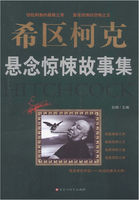The microscope shows us thirteen rings, including the head. This head is small, slightly horny, as is proved by its amber color, and bristles in front with a small number of short, stiff hairs. On each of the three segments of the thorax there are two long hairs, fixed to the lower surface; and there are two similar and still longer hairs at the end of the terminal ring. These four pairs of bristles, three in front and one behind, are the locomotory organs, to which we must add the hairy edge of the head and also the anal button, a sustaining base which might very well work with the aid of a certain stickiness, as happens with the primary larva of the Sitaris [a Parasitic Beetle noted for the multiplicity of transformations undergone by the grub]. We see, through the transparent skin, two long air tubes running parallel to each other from the first thoracic segment to the last abdominal segment but one. They ought to end in two pairs of breathing holes which Ihave not succeeded in distinguishing quite plainly. Those two big respiratory vessels are characteristic of the grubs of flies.
Their mouths correspond exactly with the points at which the two sets of stigmata open in the Anthrax larva in its second form.
For a fortnight, the feeble grub remains in the condition which Ihave described, without growing and very probably also without nourishment. Assiduous though my visits be, I never perceive it taking any refreshment. Besides, what would it eat? In the cocoon invaded there is nothing but the larva of the mason bee; and the worm cannot make use of this before acquiring the sucker that comes with the second form. Nevertheless, this life of abstinence is not a life of idleness. The animalcule explores its dish, now here, now elsewhere; it runs all over it with looper strides; it pries into the neighborhood by lifting and shaking its head.
I see a need for this long wait under a transitory form that requires no feeding. The egg is laid by the mother on the surface of the nest, somewhere near a suitable cell, I dare say, but still at a distance from the fostering larva, which is protected by a thick rampart. It is for the new born grub to make its own way to the provisions, not by violence and house breaking, of which it is incapable, but by patiently slipping through a maze of cracks, first tried, then abandoned, then tried again. It is a very difficult task, even for this most slender worm, for the bee's masonry is exceedingly compact. There are no chinks due to bad building; no fissures due to the weather; nothing but an apparently impenetrable homogeneity. I see but one weak part and that only in a few nests: it is the line where the dome joins the surface of the stone. An imperfect soldering between two materials of different nature, cement and flint, may leave a breach wide enough to admit besiegers as thin as a hair. Nevertheless, the lens is far from always finding an inlet of this kind on the nests occupied by Anthrax flies.
And so I am ready to allow that the animalcule wandering in search of its cell has the whole area of the dome at its disposal when selecting an entrance. Where the line auger of the Leucospis can enter, is there not room enough for the even slimmer Anthrax grub?
True, the Leucospis possesses muscular force and a hard boring tool. The Anthrax is extremely weak and has nothing but invincible patience. It does at great length of time what the other, furnished with superior implements, accomplishes in three hours.
This explains the fortnight spent by the Anthrax under the initial form, the object of which is to overcome the obstacle of the mason's wall, to pierce through the texture of the cocoon and to reach the victuals.
I even believe that it takes longer. The work is so laborious and the worker so feeble! I cannot tell how long it is since my bantlings attained their object. Perhaps, aided by easy roads, they had reached their fostering larvae long before the completion of their first babyhood, the end of which they were spending before my eyes, with no apparent purpose, in exploring their provisions.
The time had not yet come for them to change their skins and take their seats at the table. Their fellows must still, for the most part, be wandering through the pores of the masonry; and this was what made my search so vain at the start.
A few facts seem to suggest that the entrance into the cell may be delayed for several months by the difficulty of the passages.















